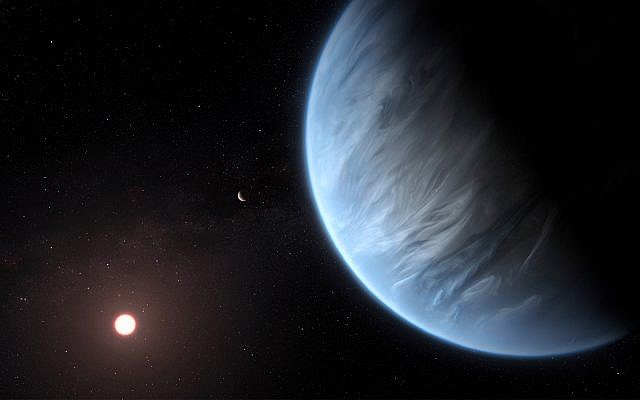Scientists at the Universities in London and Canada have discovered, for the first time ever, water at a planet outside our solar system that has temperatures needed for life. But Canadian’s lead author Angelos Tsiaras said, “this is definitely not a second Earth. “Earth-like conditions are not possible.”
The Super-Earth is in what called the golden zone. Its star is a red dwarf. It is considerably smaller and cooler than our sun, a yellow dwarf, and its atmosphere is also different than ours.
The planet known as K2-18b discovered in 2015, in the constellation Leo, 110 light-years away. It thought to be rocky, twice the size of Earth with eight times the mass. Given the planet’s mass, it would be difficult to walk on the surface.
K2-18b takes 33 days to orbit its star, so one year there is one month here. At this distance, temperatures range from minus-100 degrees to 116 degrees Fahrenheit (minus 73 degrees to 47 degrees Celsius.)
According to scientists, the clouds are too thick on K2-18b. The surface could be wet or dry. The data suggest water vapor makes up anywhere between 0.01% and 50% of the atmosphere.
The star, glowing red in the day sky, is believed to bombard the planet with radiation, although “life there may have evolved differently” in order to survive, said Ingo Waldmann from London team. Meanwhile, a sister planet orbits closer to the star and is looks too hot to be in the habitable zone.
“The star and its atmosphere are so different than ours,” Tsiaras said. “The only question that we’re trying to ask here, and we’re pushing forward, is the question of habitability.”
Another team, from The Canadian team, even suggest it might be raining there.
Lead astronomer of the University of Montreal Bjorn Benneke stress: “This represents the biggest step yet taken toward our ultimate goal of finding life on other planets, of proving that we are not alone. K2-18b could help determine is the Earth unique?” Tsiaras said
The research teams used archived data from the Hubble Space Telescope and NASA’s Kepler spacecraft but analysis of data has revealed new details not seen before. Researchers are still to determine whether the planet is indeed a true water world using NASA’s James Webb Space Telescope and the European Space Agency’s Ariel, both due to launch in the 2020s.
“While water already has been identified in the atmospheres of hot gas giants circling other stars, the latest findings represent the first detection of water vapor in the atmosphere of another type of exoplanet”, Tsiaras said.
A NASA tally currently lists 4,000 confirmed exoplanets and another 4,000 potential candidates and more than 1,260 Super-Earth.
The London team discovery published in the journal Nature Astronomy and the Canadian team announced similar findings in the Astronomical Journal.




